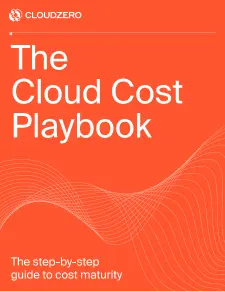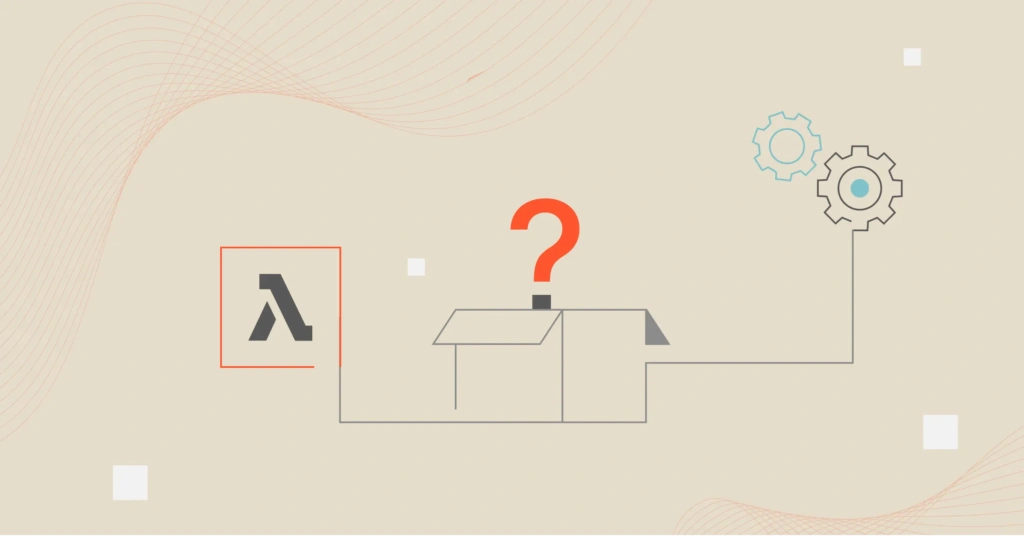As companies race to ship AI features into production, FinOps teams everywhere are scrambling to keep up with the variability of their engineers’ new favorite toys. The rapid pace of AI experimentation is creating a new wave of unpredictable usage patterns and costs.
And while the underlying dynamics may feel familiar to anyone who’s managed cloud economics before, the sheer scale and fluidity of GenAI workloads are forcing FinOps leaders to identify the underlying factors that actually move the needle on cost and performance when it comes to AI.
For those experimenting with Amazon Bedrock, AWS’s managed service for foundation models, there’s good news: Bedrock takes much of the complexity out of building and scaling AI applications. Along with abstracting away the heavy infrastructure work of provisioning GPUs, hosting large models, and managing model updates, it provides developers with unified access to several leading foundational models — including Amazon Titan, Anthropic Claude, Meta Llama wrapped up with integrated guardrails, prompt management, agents, and more.
The same abstraction that makes Bedrock appealing and powerful can also obscure its costs.
But the same abstraction that makes Bedrock appealing and powerful can also obscure its costs. Behind its shiny managed surface are a number of meaningful levers that determine not only how much you spend, but how effectively your models perform in production. Traditional FinOps practices around compute, storage, and data transfer still matter, but AI workloads introduce new, token-based cost surfaces that require innovative observability and optimization strategies.
Related read: Amazon Bedrock Pricing: How Much It Costs (+ Cost Optimization Tips)
These are the conversations FinOps and Engineering leaders (and, pro tip, your Data Engineers) need to be having together as teams continue to experiment with and optimize Amazon Bedrock.
Here are a few conversation starters that FinOps leaders can bring to the table with their various engineering teams to make sure that some of the most common cost variables are being considered as Bedrock-driven functionality starts hitting production and scale at your organization.
1. Prompt Caching: A No-Lose Option
While it’s not available in every model Bedrock supports (currently available in Claude 3.7 Sonnet, Claude 3.5, Haiku, and Amazon Nova Micro/Lite/Pro/Premier), this just feels like an absolute no-brainer option where it is available, so I figured I’d start off with it.
When prompt caching is enabled, Bedrock will cache the responses for prompts for five minutes before ultimately clearing the cache. This means that if your application repeatedly responds to identical or nearly identical prompts, especially with consistent or static prefix, at a high frequency, this setting enables it to return responses instantly at no additional compute cost.
In those situations, prompt caching has the potential to provide significant savings when you have a large system prompt or if you need to maintain a lot of context across multiple requests, such as asking questions about a large document that was just uploaded.
If that’s not necessarily a use case that aligns to your particular application, you may have to temper expectations on cost savings. But even in those situations, caching provides a baseline optimization with virtually no downside, so it’s something you should encourage your engineering team to consider enabling globally across Bedrock.
2. Batch Vs. Real-Time: When ‘Do It Later’ Can Save
Not every inference needs instant results. With AWS Bedrock, batch inference lets you group prompts and run them together, cutting costs while keeping accuracy. It’s like brewing a full pot of coffee instead of a cup at a time: same outcome, better efficiency.
Batching is ideal for asynchronous or event-driven workloads where latency isn’t critical but throughput and cost efficiency are. Instead of paying for always-on, low-latency capacity, you can schedule large jobs using Bedrock’s batch mode for predictable, high-volume work. Three smart times to batch:
- Testing new models: Compare outputs or performance in bulk, without wasting real-time spend.
- Generating content: Summarize data, create copy, or refresh assets overnight.
- Running analytics: Tag, classify, or enrich data pipelines where latency doesn’t matter.
According to AWS’s guidance, batch processing in Bedrock can offer up to 50% lower price compared to standard on-demand inference. It’s worth noting that batch inference is only available for on-demand, pay-per-token inferences and not for provisioned throughput models (see below).
FinOps teams should push teams to ask: Does this really need to be real-time? Blending real-time for experiences and batch for background work drives the best performance-to-cost ratio. This area in particular is one where you’ll want to get your data engineers involved early and often, as they are likely the ones who are (or should be) owning and controlling data pipelines.
3. Context Windows: Set Boundaries, Save Budgets
Large context windows can unlock richer reasoning and memory, but they can also quietly inflate costs. In Bedrock, models like Claude Sonnet 4 now support context windows up to 1 million tokens, yet every extra token you pass adds directly to your bill, so leaving models unguarded to use their full million-token window can multiply expenses fast. In fact, both prompt caching and batch inference (see above) become pretty much essential in situations where context windows are left wide open.
FinOps teams should help engineers right-size context windows to match the use case, not the maximum setting. Trimming prompts, summarizing history, or enforcing token caps through SDKs can prevent runaway token usage while keeping output quality high.
According to AWS’ prescriptive guidance, prompt length and verbosity directly increase Bedrock costs linearly, meaning tighter context control translates directly into measurable savings. The goal isn’t limiting innovation, but making sure context depth is intentional, not accidental.
4. Intelligent Prompt Routing: Matching Workloads To The Right Model
Intelligent prompt routing adds a smart decision layer that evaluates each request and automatically sends it to the most efficient model that can handle it. This is built into the platform through Intelligent Prompt Routing (IPR), which allows you to send prompts to a router endpoint, then Bedrock automatically decides whether it needs a smaller, cheaper model or a larger, more capable one. For example, you might choose to route short customer service questions to Claude Haiku and escalate more complex product questions to Claude Sonnet.
You can fine-tune the router with a few key settings: choose which model family to route within (e.g., Titan Text or Claude), define a fallback model, and set how much quality difference is required to trigger the higher-end model. This allows teams to balance accuracy, latency, and cost automatically, without hand-coding routing logic.
According to AWS’s own benchmarks, organizations can reduce inference costs by roughly 30% while maintaining output quality, an efficiency gain that compounds at scale. AWS themselves admit that routing may not always be optimal for specialized use cases, but for more generalized situations, as workloads and processes mature, it can become one of the most powerful cost levers for driving predictable, optimized AI spend.
From a FinOps perspective, you’ll likely want to make sure you’re logging token usage and output quality across models before enabling intelligent prompt routing. This will be key for verifying actual realized savings and avoiding performance regression.
5. Provisioned Throughput: Attain Predictability, Then Commit
At its core, Bedrock operates on a token-based model; tokens in, tokens out. That means any way you can lower the cost of each token you use will ultimately save your business money. Just like with compute, commitments and reservations are one way to lower that cost per token.
Of course, for teams just starting out, or still scaling at a rapid pace, on-demand throughput makes sense: it’s flexible, scales with experimentation, and supports unpredictable usage. Even for some of the most mature FinOps for AI enterprises, this still is the right or necessary option due to the sheer growth they’re experiencing in GenAI and ML usage.
This is particularly important to call out in this situation because, with provisioned throughput, you’re actually paying for reserved performance, no usage. So moving away from on-demand usage too early essentially violates a principle of FinOps by paying for idle capacity.
All of that said, once usage patterns do stabilize and forecasting proves to be very accurate, provisioned throughput commitments become a powerful optimization lever. It’s up to each organization to determine their own threshold for predictability here, but an example benchmark could be that when your daily token volume is stable within +/-10% over the course of two weeks you’re ready to move from on-demand to provisioned throughput.
Bedrock offers 1- and 6-month commitment options that reduce per-token costs and deliver latency benefits from reserved capacity. According to AWS’s guidance, customers that shift to provisioned throughput typically see 40-60% lower per-token costs compared to on-demand usage. The key is to monitor token usage early and shift to commitments only when predictability emerges.
Bringing It All Together
Amazon Bedrock removes many of the operational headaches of AI adoption, but it doesn’t remove the need for cost consciousness. FinOps and Engineering leaders should start collaborating early to instrument metrics, experiment with configurations, and treat AI models like any other cloud workload: a system of levers that can be tuned for performance, efficiency, and impact.
This whole new world of AI-aware FinOps is going to push individuals to get a whole new understanding of AI infrastructure, data pipelines, AI agents, prompt engineering and more, but the teams who start to build this muscle now will not only help their businesses proactively control costs, they’ll gain a lasting advantage in how quickly and profitably they can bring AI to market.








